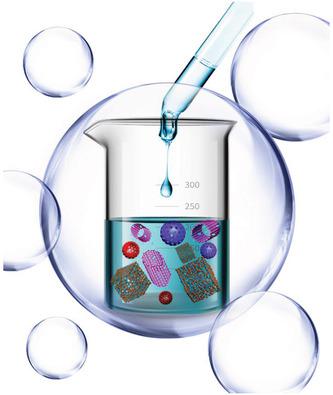当前位置:
X-MOL 学术
›
Adv. Sust. Syst.
›
论文详情
Our official English website, www.x-mol.net, welcomes your feedback! (Note: you will need to create a separate account there.)
How to Design Hydrogen Storage Materials? Fundamentals, Synthesis, and Storage Tanks
Advanced Sustainable Systems ( IF 7.1 ) Pub Date : 2019-06-26 , DOI: 10.1002/adsu.201900043 Qiwen Lai 1 , Yahui Sun 1 , Ting Wang 1 , Poojan Modi 1 , Claudio Cazorla 2 , Umit B. Demirci 3 , Jose Ramon Ares Fernandez 4 , Fabrice Leardini 4 , Kondo‐François Aguey‐Zinsou 1
Advanced Sustainable Systems ( IF 7.1 ) Pub Date : 2019-06-26 , DOI: 10.1002/adsu.201900043 Qiwen Lai 1 , Yahui Sun 1 , Ting Wang 1 , Poojan Modi 1 , Claudio Cazorla 2 , Umit B. Demirci 3 , Jose Ramon Ares Fernandez 4 , Fabrice Leardini 4 , Kondo‐François Aguey‐Zinsou 1
Affiliation

|
As the world shifts toward renewable energy, the need for an effective energy carrier is pressing. Hydrogen has often been touted as a universal clean energy vector and the fuel of the future. Unfortunately, mass adoption of the hydrogen economy is slow due to a lack of incentives and technical difficulties in storing hydrogen. Better materials capable of reversible hydrogen uptake/release with hydrogen capacity surpassing 5 mass% at the ambient must emerge. So far, finding such materials has been elusive; alloys capable of ambient hydrogen uptake/release have a low storage capacity while high capacity hydrides have a very high hydrogen release temperature. From metal alloys to complex hydrides, a better understanding of the behavior of hydrogen in hydrides is essential to fine‐tune their properties toward application. Herein, the latest approaches to design hydrogen storage materials based on known hydrides are reviewed with the aim to facilitate the emergence of alternative thinking toward the design of better hydrogen storage materials. Synthetic methods and conceptual approaches to achieve particular hydrogen thermodynamics and kinetics are discussed. These include metallurgical alloying, mechanochemical modification, chemical destabilization, the nanosizing approach, and theoretical modeling and machine learning techniques to guide experimental work.
中文翻译:

如何设计储氢材料?基础,合成和储罐
随着世界转向可再生能源,迫切需要有效的能源载体。氢经常被吹捧为普遍的清洁能源和未来的燃料。不幸的是,由于缺乏动力和储存氢的技术困难,氢经济的大规模采用是缓慢的。必须出现更好的材料,该材料具有可逆的氢吸收/释放能力,在室温下氢容量超过5质量%。到目前为止,找到这样的材料还很困难。能够吸收/释放周围氢的合金的储氢能力较低,而高容量氢化物的氢释放温度非常高。从金属合金到复杂的氢化物,对氢化物中氢的行为的深入了解对于微调其在应用中的性能至关重要。在此处,综述了基于已知氢化物设计储氢材料的最新方法,目的是促进出现替代想法,以设计更好的储氢材料。讨论了实现特定氢热力学和动力学的合成方法和概念方法。其中包括冶金合金化,机械化学改性,化学去稳定,纳米化方法以及指导实验工作的理论建模和机器学习技术。
更新日期:2019-09-10
中文翻译:

如何设计储氢材料?基础,合成和储罐
随着世界转向可再生能源,迫切需要有效的能源载体。氢经常被吹捧为普遍的清洁能源和未来的燃料。不幸的是,由于缺乏动力和储存氢的技术困难,氢经济的大规模采用是缓慢的。必须出现更好的材料,该材料具有可逆的氢吸收/释放能力,在室温下氢容量超过5质量%。到目前为止,找到这样的材料还很困难。能够吸收/释放周围氢的合金的储氢能力较低,而高容量氢化物的氢释放温度非常高。从金属合金到复杂的氢化物,对氢化物中氢的行为的深入了解对于微调其在应用中的性能至关重要。在此处,综述了基于已知氢化物设计储氢材料的最新方法,目的是促进出现替代想法,以设计更好的储氢材料。讨论了实现特定氢热力学和动力学的合成方法和概念方法。其中包括冶金合金化,机械化学改性,化学去稳定,纳米化方法以及指导实验工作的理论建模和机器学习技术。



























 京公网安备 11010802027423号
京公网安备 11010802027423号